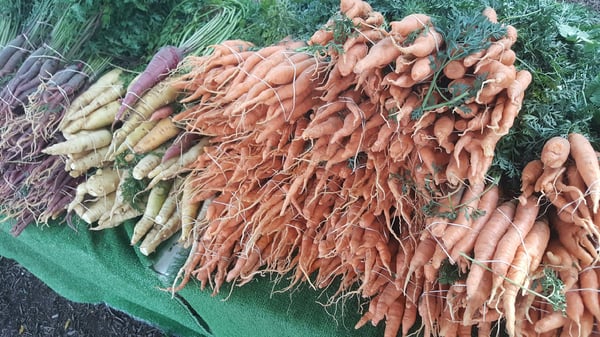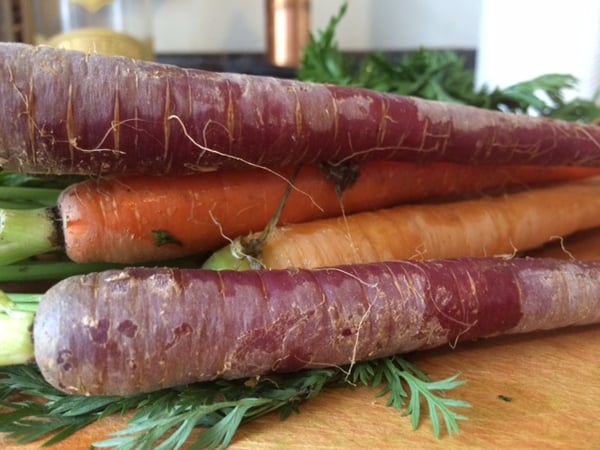
The humble carrot is one of the many vegetables that we buy without thought. It's used ubiquitously in a recipe as a way of highlighting or supporting other flavors. It serves its purpose as being a structural element within cooking and kitchens. Place yourself in any kitchen both commercially or residential and open the fridge: is there a bag of carrots tucked haphazardly in the would be “crisper” drawer or container? Thought so.
Carrots as with most roots and tubers (basically anything that grows under the ground) aren’t the rock stars of the culinary world. All food cultures around the world have used them since time began as a cheap and easy way to feed people, just like potatoes, yuca, taro, parsnips and yams. This has led to their natural PR issue- they’re just not exciting. Something to feed animals and the poor, certainly not nobleman and socialites!
Carrots are the swollen “taproots” of vegetables belonging to the Umbelliforrous family that includes celery, parsnips, parsley, cumin and dill (look at the resemblance in their flowers). They lend complexity to stocks, soups and stews with their complex aromatic molecules and add a hint of sweetness (up to 5% total weight of a mixture sucrose, glucose and fructose). These characteristics have led them to be used in many cultures' sweets and pastries - carrot cake and the vegetable fudge halwa.

There are two distinct families of the Daucus Carota: the Mediterranean carotene carrot (orange/yellow) and the Asian anthocyanin carrot (reddish-purple to purple-black). The a-typical orange carrot we know as the gold-standard of carrots is a hybrid of the yellow Mediterranean, the white of classical times and wild populations and was developed in Holland in the 17th Century (it also carries the richest source of the precursor to vitamin A: beta-carotene). The main difference between the two types is that Asian carrots leach their colors in water based techniques while carotene carrots will not (it has to do with water and oil-soluble pigments).
The flavor of carrots are a composite of pine, wood, oil and citrus due to terpene chemicals found within. Cooking happens to bring out the more violet notes. White carrots are considered the more aromatic of the varieties. Peeling the carrots diminishes its bitter taste, increases its sweetness and prevents browning. The core of the carrot itself is woodier and less flavorful than the outer storage layers. I remove it when I am trying to highlight the gentle sweet flavors of the carrot. It also prevents over cooking of the outer layers since the inner core takes longer to cook.
 Oh ya… and baby carrots are just large mature carrots whittled down! Boom, mic drop…
Oh ya… and baby carrots are just large mature carrots whittled down! Boom, mic drop…
Come check out The Chopping Block's Knife Skills class, and I can teach you how to break down some of these forgotten treasures and get the most out of your cooking (you'll even get to take your cut carrots home!).

